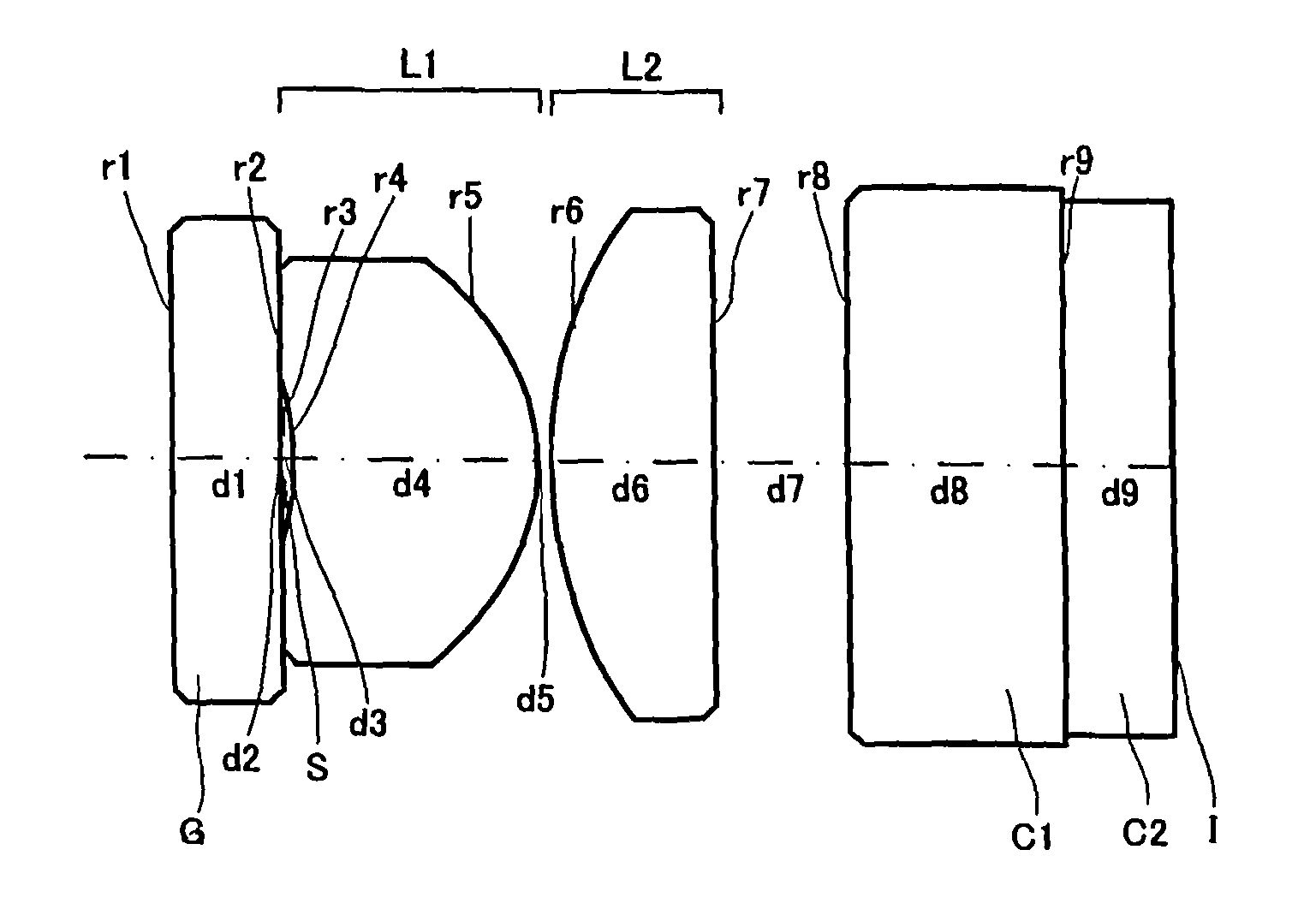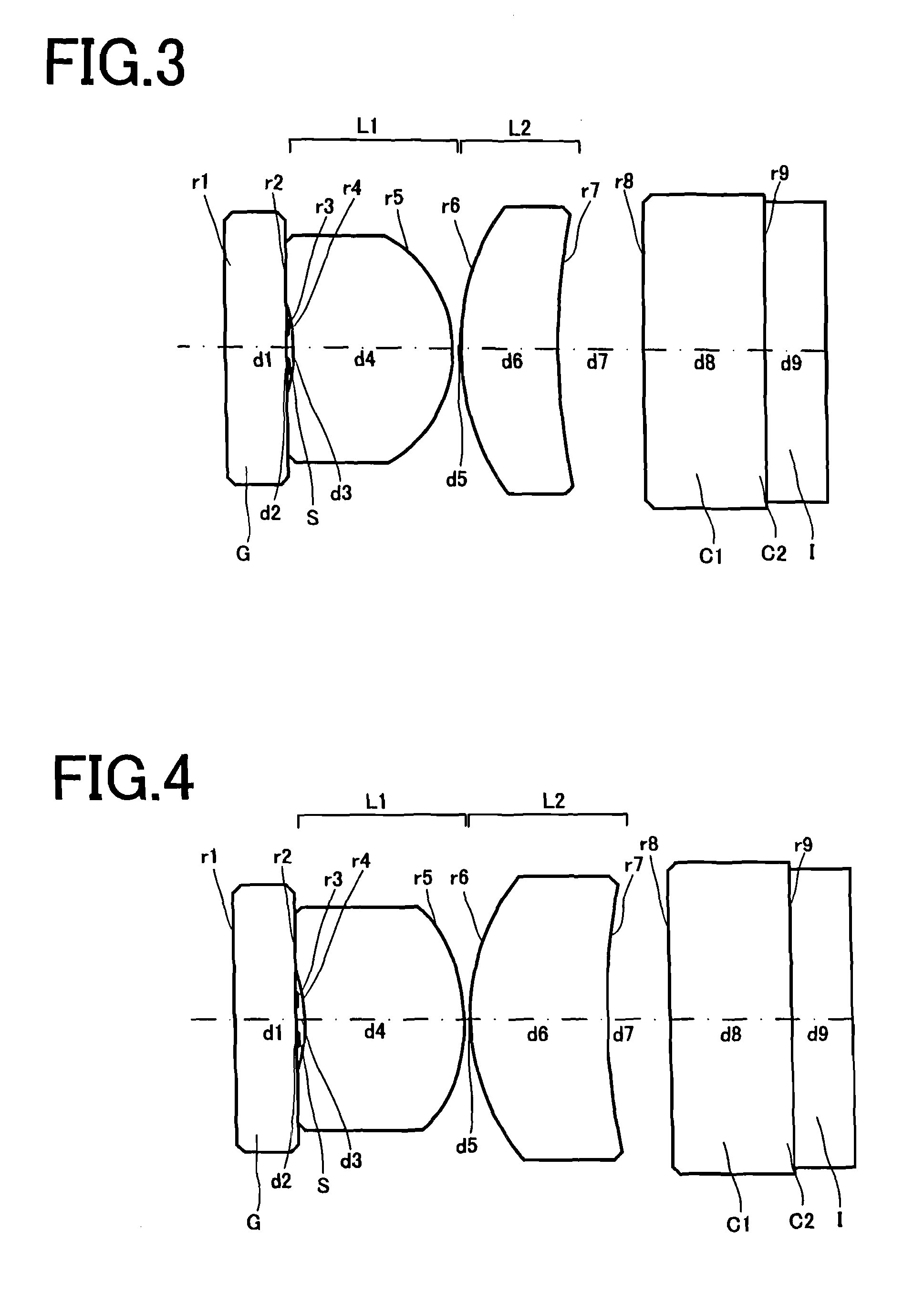Objective optical system for endoscopes
an optical system and endoscope technology, applied in the field of endoscope objects, can solve the problems of optical systems, still less compatible with ccds having a lot more pixels, and 4 have not had an angle of view, and achieve the effect of small format and high performan
- Summary
- Abstract
- Description
- Claims
- Application Information
AI Technical Summary
Benefits of technology
Problems solved by technology
Method used
Image
Examples
numerical example 1
[0079]
Unit mmFocal Length 1.181Surface DataSurface No.rdneνdObject Point∞11.90001∞0.40001.8881540.762 (Stop)∞0.01003∞0.05004−1.10000.90001.7323454.685−0.90000.050061.65000.60001.5196575.007∞0.50008∞0.80001.5182564.149∞0.40001.6137950.20Image Plane
numerical example 2
[0080]
Unit mmFocal Length 1.182Surface DataSurface No.rdneνdObject Point∞11.90001∞0.40001.8881540.762 (Stop)∞0.01003∞0.05004−1.15000.92001.7762149.605−0.95000.050061.65000.60001.5196575.007∞0.50008∞0.80001.5182564.149∞0.40001.6137950.20Image Plane
numerical example 3
[0081]
Unit mmFocal Length 1.206Surface DataSurface No.rdneνdObject Point∞11.9000 1∞0.40001.8881540.76 2 (Stop)∞0.0100 3∞0.0500 4−1.05001.05001.6997955.53 5−0.85000.0500 61.65000.65001.5182564.14 75.00000.5600 8∞0.80001.5182564.1410∞0.40001.6137950.20Image Plane
PUM
 Login to View More
Login to View More Abstract
Description
Claims
Application Information
 Login to View More
Login to View More - R&D
- Intellectual Property
- Life Sciences
- Materials
- Tech Scout
- Unparalleled Data Quality
- Higher Quality Content
- 60% Fewer Hallucinations
Browse by: Latest US Patents, China's latest patents, Technical Efficacy Thesaurus, Application Domain, Technology Topic, Popular Technical Reports.
© 2025 PatSnap. All rights reserved.Legal|Privacy policy|Modern Slavery Act Transparency Statement|Sitemap|About US| Contact US: help@patsnap.com



